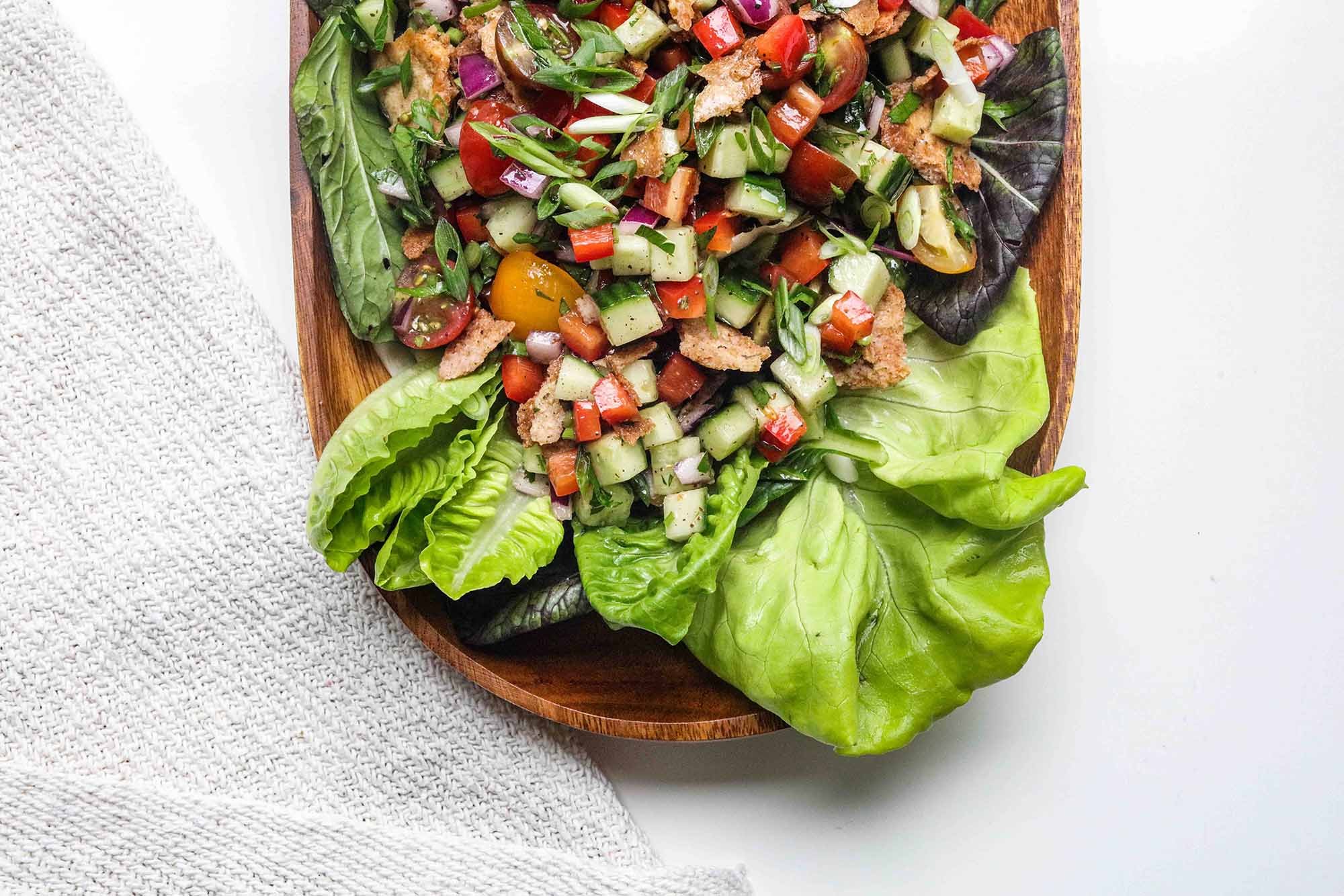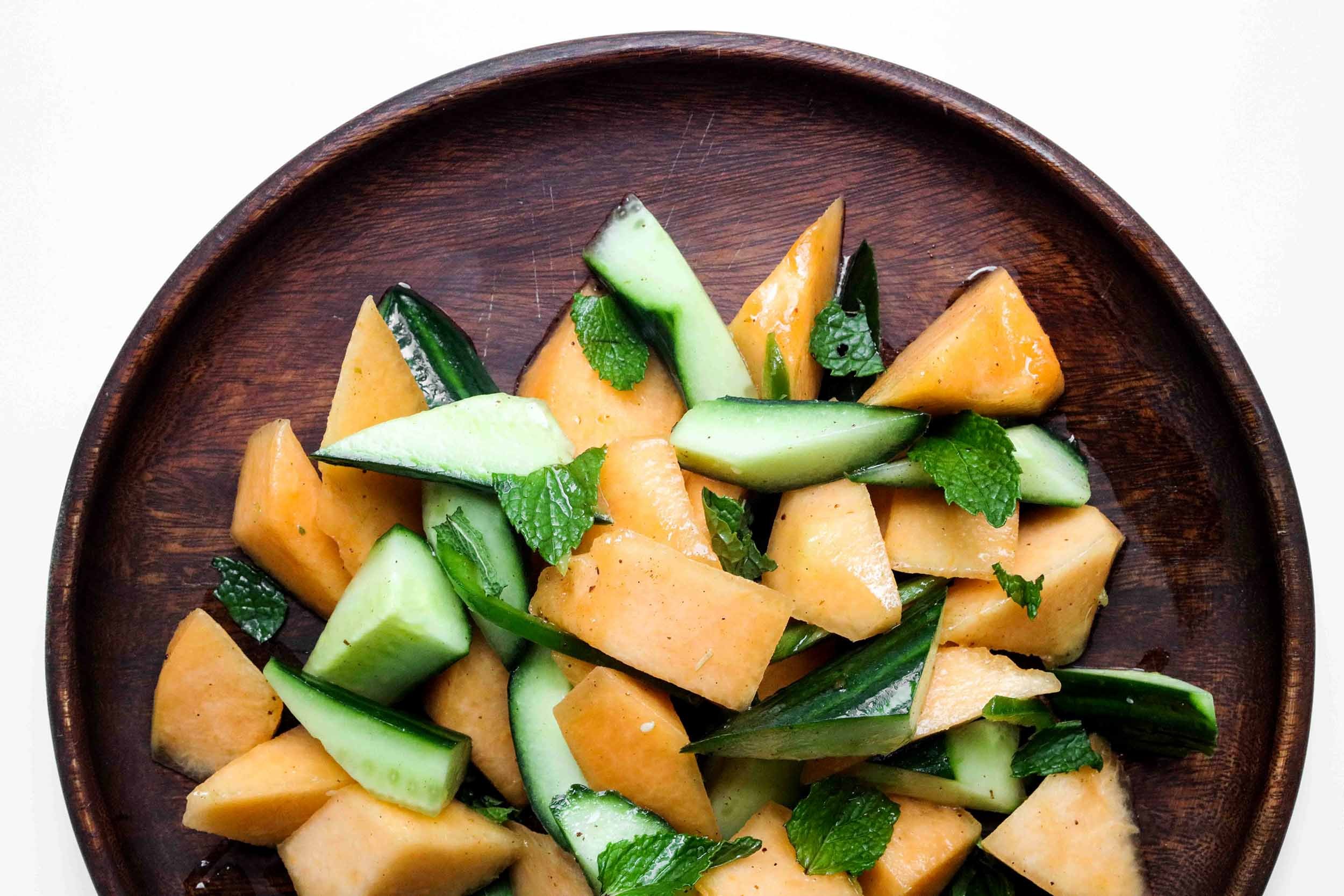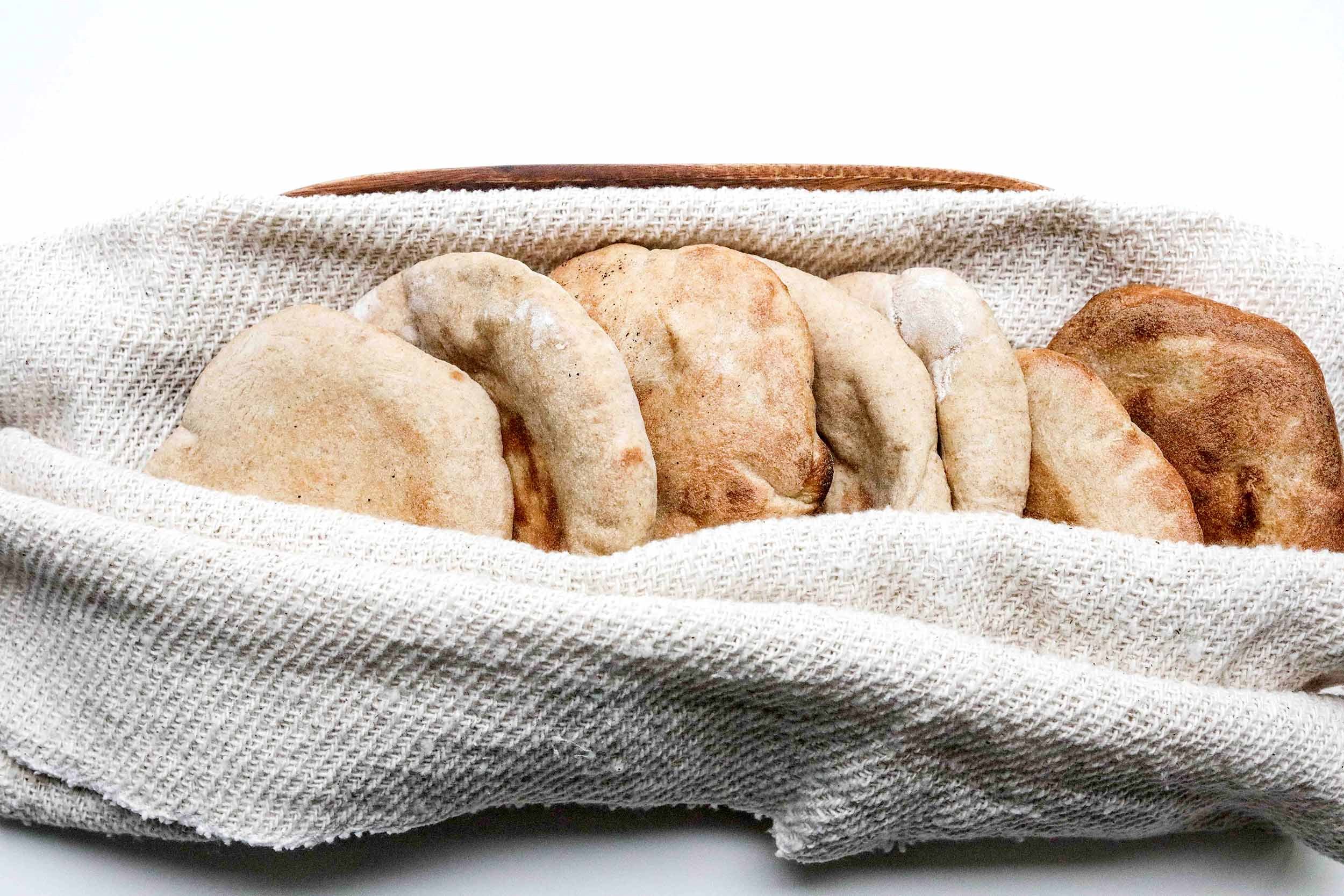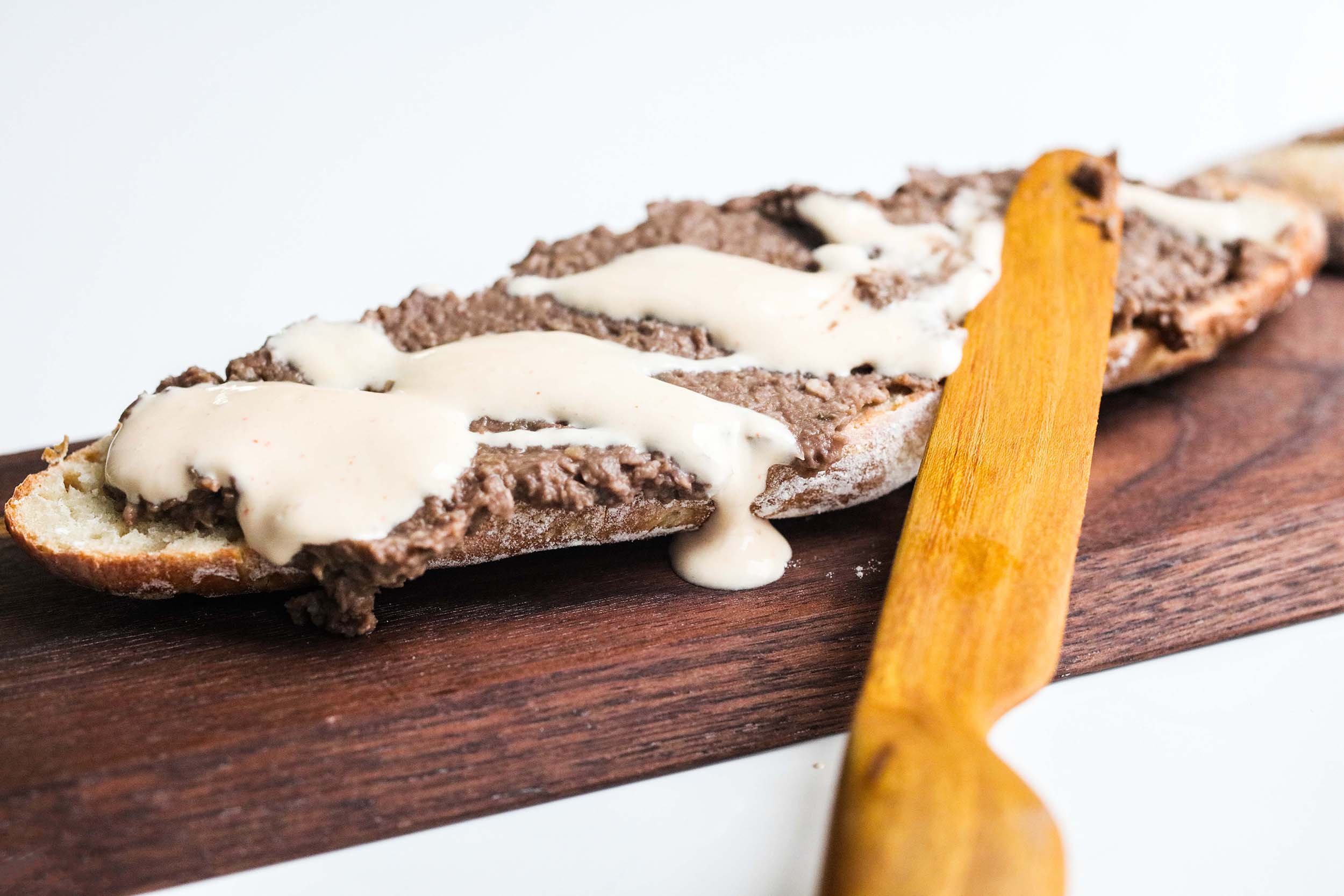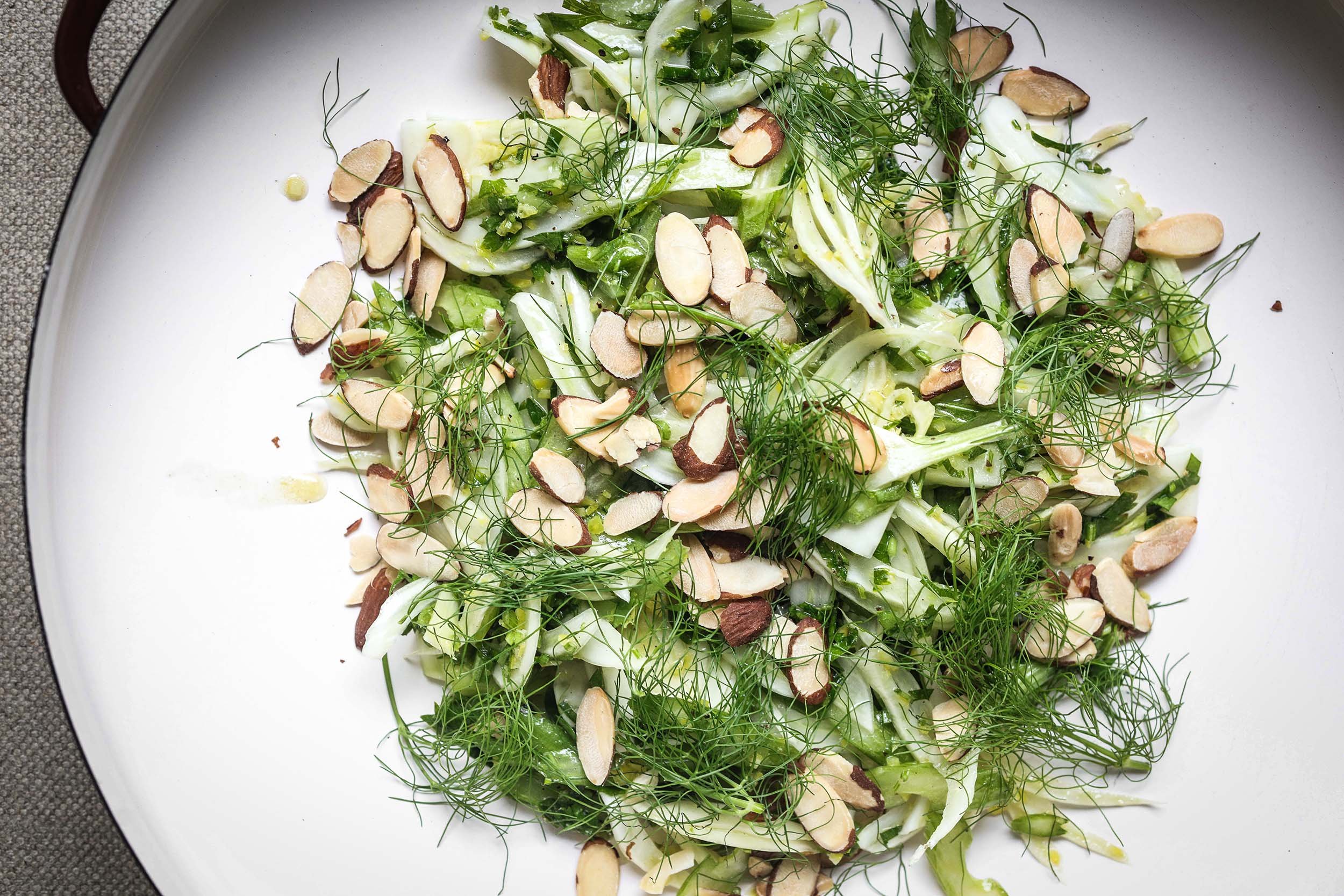Babaganoush
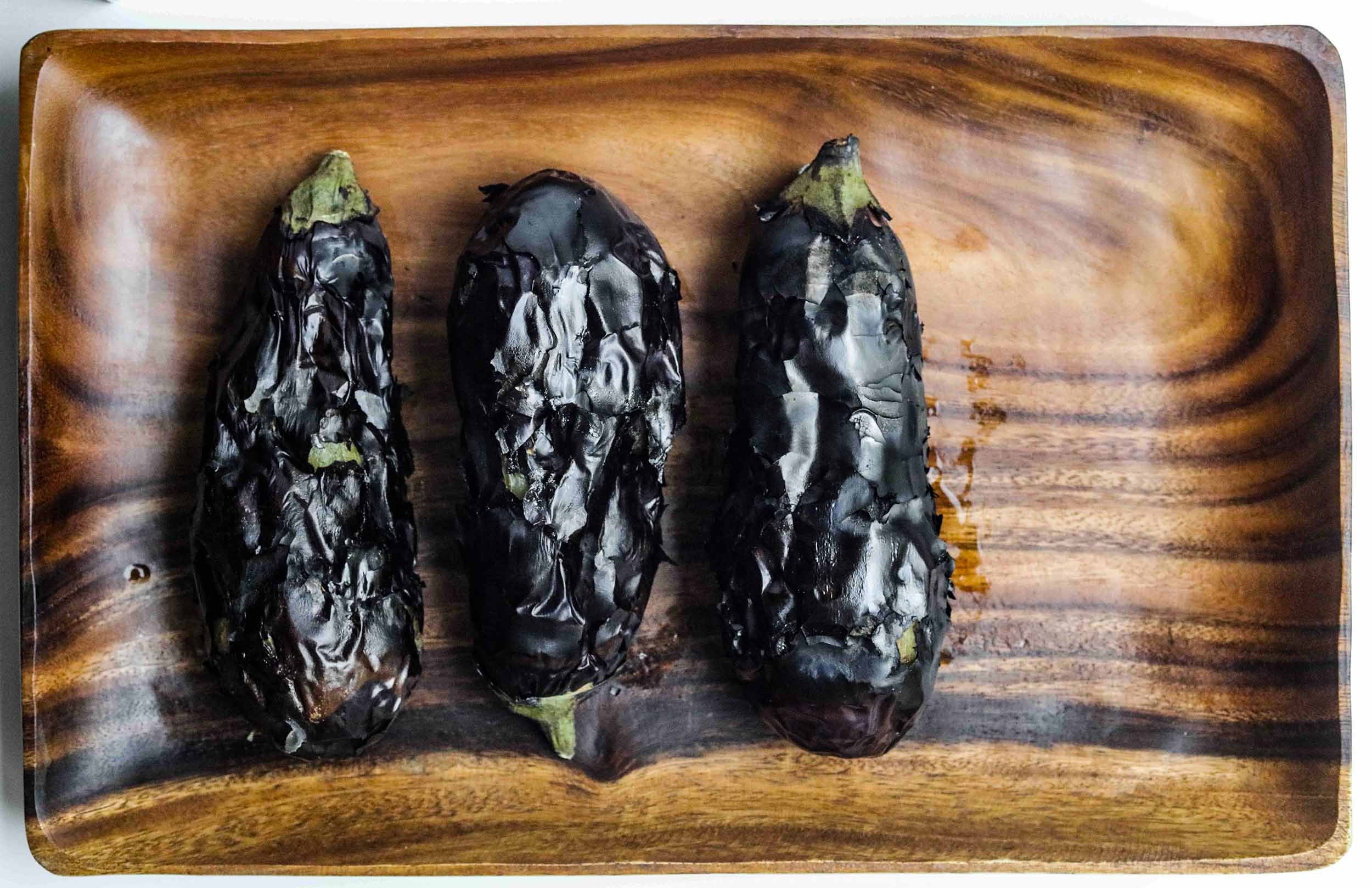
makes 2 cups
1½ lbs. (1 large or 2 medium) eggplant
2 garlic cloves
2 Tbsp. fresh lemon Juice
2 Tbsp. tahini
3 Tbsp. extra-virgin olive oil, divided use
¼ tsp. paprika
Kosher salt to taste
Preheat a grill to high. Place the whole eggplants on the grate. Allow the eggplants to char and the insides to become soft, using tongs to rotate the eggplants and ensure all sides are evenly charred. When they’re fully charred, place the eggplants in a heat-proof container and cover. (This will allow the eggplants to steam and make it easier to remove the charred skin.) After about 15 minutes, carefully remove the skin and stem, and reserve the pulp.
Place the eggplant pulp in the bowl of a food processor or blender and process until smooth.
Add the garlic, lemon juice, tahini, 2 Tbsp of olive oil, and salt. Process until smooth and fully combined. Taste and adjust seasoning.
Transfer the mixture to a serving dish, drizzle on the remaining olive oil, and sprinkle with paprika.
Tahini is a sesame seed paste that provides a richer mouthfeel to the babaganoush and is commonly used to make hummus. You can make it from scratch by grinding sesame seeds. However, it is relatively common in many stores, and it’s best to stir well before using it, as some of the natural oils can separate.
Stephanie has worked in the hospitality industry for over a decade. A graduate of CIA. NYU, and Maryville University she now oversees online programs for Auguste Escoffier School of Culinary Arts: Plant-Based Culinary Arts and Holistic Nutrition & Wellness. She also works with the Osher Center for Integrative Health at University of Cincinnati, teaching food as medicine principles. When she is not working or researching, Stephanie is an avid painter and enjoys traveling and hiking with her husband, Nick, and three rescue dogs.


